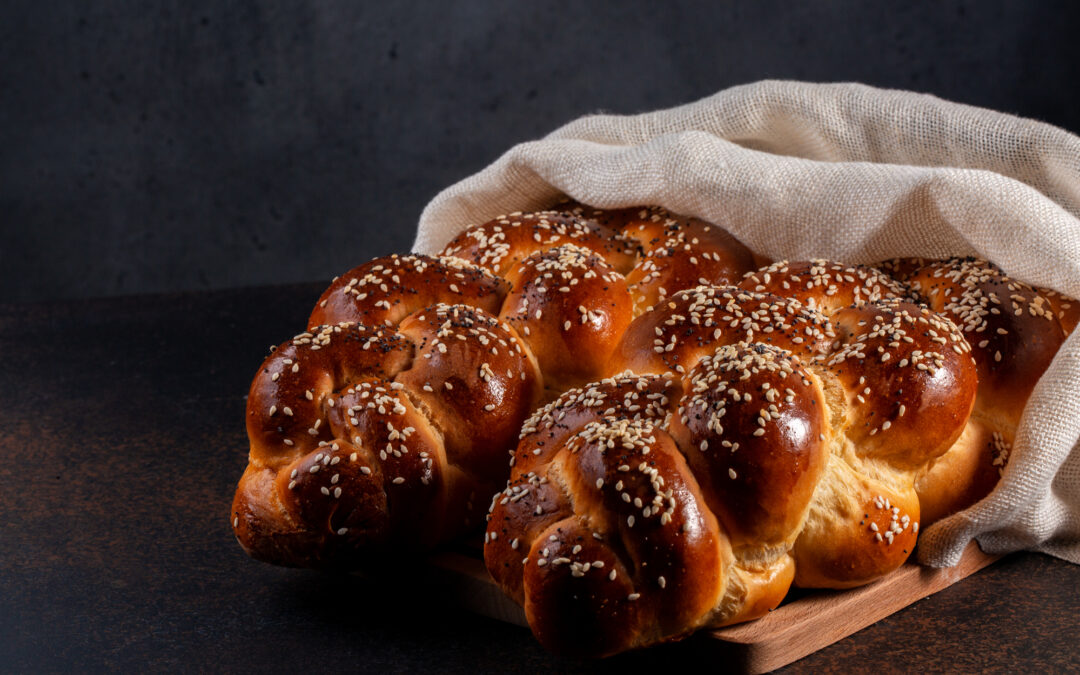What Makes Challah Unique? When Is It Used?
Many of us have heard of, seen or even tasted challah bread, often without any understanding of its origins or its significance in the Jewish faith. Let’s take a closer look at this traditional bread, at its origins, how it is typically prepared, and when it’s commonly consumed.
What Is Challah Bread?
Challah bread comes from the Ashkenazi Jewish tradition. While the ingredients may vary a little bit from region to region, it’s commonly braided in appearance and made from eggs, white flower, water, yeast, sugar and salt. The word “challah” comes from the Hebrew term for a type of loaf or cake. Its root also suggests that it is “hollow” or contains space.
Challah can be found in Yiddish communities across the European continent, with a wide variance in the name. Khale, berkhes, barches, bukhte, koylatch, koilitsh and shtritsi are some of the alternate terms used to describe it.
What Is Commonly Found in Challah Bread?
Though challah most commonly contains the six ingredients listed above, it has a number of variants:
- The so-called “water challah” omits the eggs, making it suitable for those on a vegan diet
- Some egg challahs also include saffron or raisins; the Ashkenazi version typically has egg brushed on the top and is then sprinkled with poppy or sesame seeds. Sephardic Jews tend to use anise seeds, as well as sesame seeds.
- Many modern traditions substitute whole wheat or oat flour, or use molasses or honey instead of sugar
How Must Challah Be Ritually Prepared?
The challah that is used in religious observances must come from dough from which a small portion has been set aside as an offering. According to Rabbinic practice, when the dough is mixed, a portion of it must be set aside as a tithe.
According to Ashkenazi practice, each loaf of challah is comprised of six strands of dough, woven into braids. Each of the Sabbath meals (Friday night, Saturday midday and Saturday late meal) must begin with two loaves of challah bread. The same practice applies to holiday meals. Together, these two loaves of challah contain twelve strands, a symbol of the twelve loaves of showbread offered in the Temple.
There’s a specific ritual for consumption of the challah bread at a Sabbath meal:
- Initially, the challah will be covered by a cloth
- Kiddush is recited with a cup of wine
- All attendees engage in a ritual washing of hands, as a preparation of consuming the bread
- The cover is removed from the bread and the loaves are held up together
- The head of the household recites the blessing
- The bread is torn or sliced, salted and distributed to the attendees
Turn to Gutterman’s For Guidance in Your Time of Bereavement
At Gutterman’s and Gutterman Warheit, we have more than 125 years of experience providing funeral and burial services to individuals and families the Jewish communities in New York and Florida. To learn how we can be assistance, send us an email or call us at one of the numbers listed below.
Gutterman’s & Gutterman Warheit — Where Relationships Matter
Family Owned and Operated Since 1892
Rockville Centre: (516)764-9400 | Woodbury: (516)921-5757 | Brooklyn: (718)284-1500
Boca Raton, FL: (561)997-9900 | (800)992-9262

